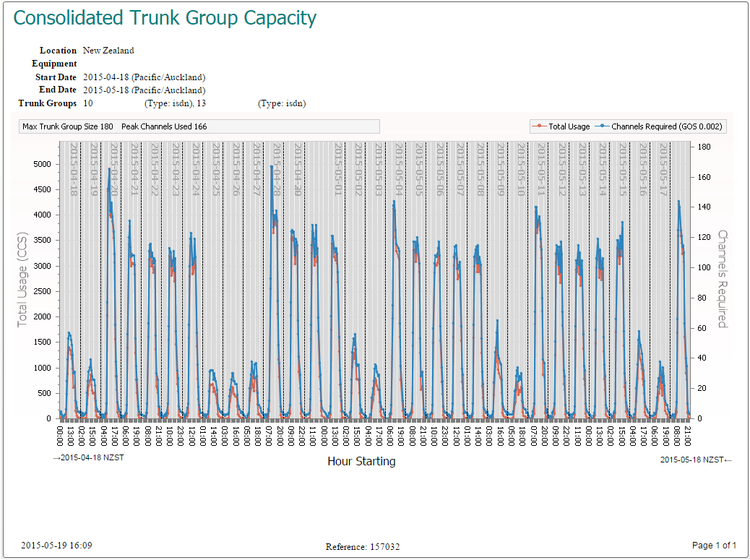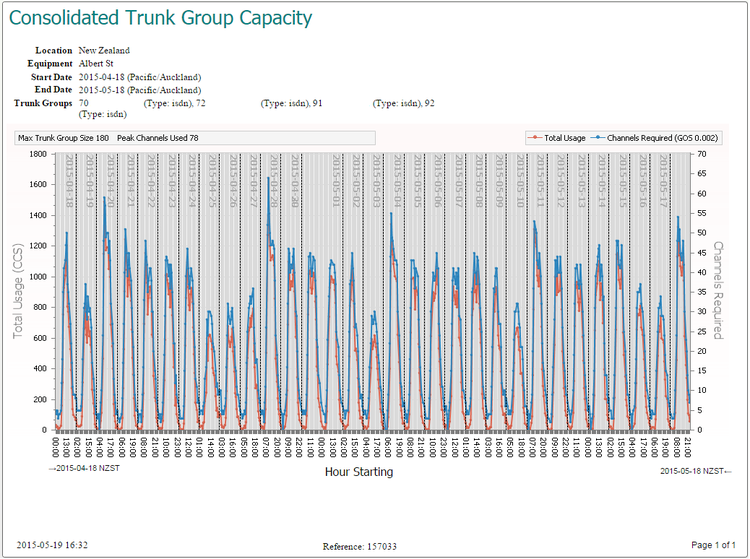What’s it for?
Ideal for engineers to model the scale of combined trunk groups and accurately assess trunk number requirements.
- Summary view of traffic data from multiple trunk groups
- Modeling of traffic volume
- Assess trunk number requirements
- Cost saving
Where do I find it?
Available as part of VSM’s Capacity Manager module within Reports. Capacity Manager’s library of useful reports let you track utilization of hardware and software across your UC platform.
Trunk Group Consolidated Reports in Action
Click on the screen below for a demonstration of Trunk Group Consolidated Reports.
Example Report 1
This example’s been run against trunk groups 10 and 13 which operate as a single trunk group. It shows the combined total peak occupancy was 166 of the 180 trunk members equipped. The Erlang modeling on the right axis supports this.

Example Report 2

Here the engineer wants to scope the size of a single SIP trunk group, delivered into a centralized data center, to replace these ISDN trunk groups. As trunk groups operate more efficiently when combined, there should be a substantial reduction in the number of SIP members required.
This shows the combined total peak occupancy was 78 of the 180 trunk members equipped. The Erlang modeling on the right calculates that only about 65 members will be required. The engineer can confidently say moving to a single SIP trunk group will reduce the number of channels from 180 to 65.
